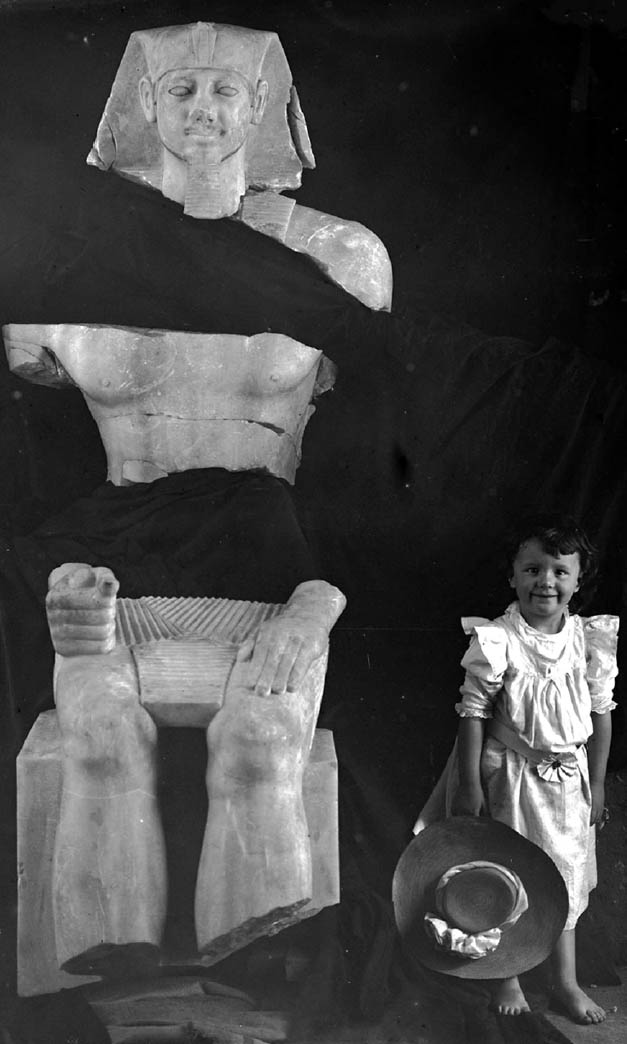THE ANCIENT EGYPTIAN COLLECTION AT THE MUSEUM OF FINE ARTS, BOSTON. PART 2, A REVIEW OF FORMER TREATMENTS AT THE MFA AND THEIR CONSEQUENCESSUSANNE G�NSICKE, PAMELA HATCHFIELD, ABIGAIL HYKIN, MARIE SVOBODA, & C. MEI-AN TSU
2 EARLY HISTORY OF CONSERVATION AT THE MFA: THE RESEARCH LABORATORYMany of the excavated Egyptian artifacts needed major treatment and restoration prior to exhibition at the MFA. Alfred Lucas consulted on the stabilization of artifacts through written correspondence with Dows Dunham, curator of the Egyptian Department from 1942 to 1957. Museum documents suggest that Dunham carried out many treatment procedures himself, such as the desalination of ceramics (Dunham 1928). Joseph Linden Smith, an honorary curator of the Egyptian Department and a distinguished painter who documented tomb reliefs in Giza with life-size oil paintings, was called upon to assist in large-scale restorations such as that of the colossal statue of Menkaure (Mycerinus) (MFA 09.204; Reisner 1931). The restoration, which entailed re-creating missing passages based on a related sculpture in Cairo, was completed in 1935 by Smith with the help of a graduate of the Museum School, an art school associated with the MFA (Dunham 1935). The statue currently stands in the Old Kingdom Gallery, its condition virtually unchanged since the time of the 1935 restoration (figs. 1, 2). In 1929, the British chemist William (Bill) Young was invited to Boston by MFA trustee E. P. Warren (fig. 3). Young's successful treatment of a heavily corroded bronze Aegis (fig. 4; MFA 31.195; Dunham 1931) convinced the Board of Trustees that the MFA needed a department devoted to treatment of its collections (Schur 1977). Thus the Department of Restoration, later renamed the Research Laboratory, was formally established. Trained by his father at the Ashmolean Museum Laboratory, and associated with the Pitt Rivers Museum and the Institute for Archaeological Research in London, Young pioneered many procedures associated with the scientific examination and treatment of works of art and organized a series of international symposia titled, “Application of Science in the Examination of Works of Art,” the first taking place in 1958. Dated documentation related to treatments or examinations began in 1940, although there are 205 earlier, undated records. Young's records generally state the reason for an object's being in the laboratory, such as “Ascertain whether the objects are copper or bronze” or “Determine authenticity,” and the procedure followed, such as “microscopic, spectrographic or visual.” The report may state: “the object is copper,” or “a forgery,” or “condition determined.” These records are useful in letting us know that an object was in the laboratory, and they often indicate the type of analysis. Unfortunately, they do not describe the condition or treatment of objects. More specific information on selected objects can be gleaned from publications, such as the Bulletin of the Museum of Fine Arts (MFA Bulletin), which was published beginning in 1903. In 1968, the Murray Pease Report established guidelines for practice and a code of ethics for conservation that emphasized the importance of documentation (IIC-AG 1968). An outcome of this development may have been the system of work-sheets introduced in 1971, which are apparently the earliest treatment reports. Some reports may be as cursory as “Standard Operating Procedure” or “SOP,” but occasionally there is more specific information regarding the condition and treatment. Condition reports, treatment proposals, and treatment reports, as we use them today, came into use about 1981. Merville E. Nichols, a prot�g� of Young, treated large parts of the collection over decades. He started his training with Young in 1947 and was associated From discussions with MFA staff who remember early conservation materials and procedures (Beale 2002; Lachevre 2002), it is believed that many materials were introduced to the museum by Young and then adopted by Nichols and the conservators who worked with them.
|
